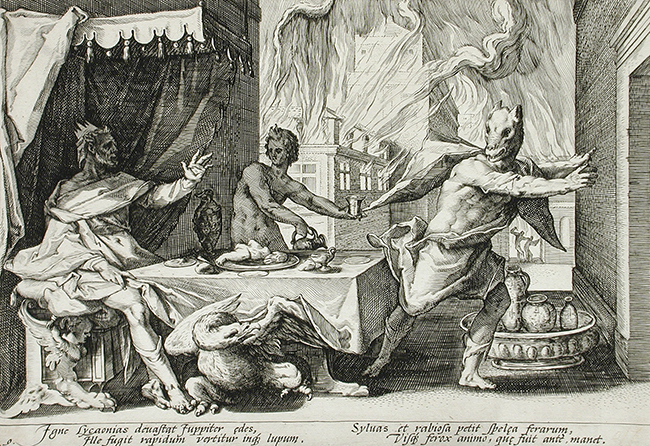Creatures of the Night: Werewolf
With the changing of the leaves and the approach of Halloween, the mind turns to the things that go bump in the night, and the creatures that live in our dreams and nightmares. In honor of the spookiest season, Jefferson County Post writer Elizabeth Lane presents a series featuring some of the most iconic figures of Halloween.
Ghost stories and other traditional myths have been passed from generation to generation, and this is the season to revel in them. This is especially true for the beloved figure known as the werewolf. What do we really know about these mythical terrorizers of villages, haunted by the appearance of the moon? We can start with some historical legends surrounding the creature.
The legend of the werewolf begins with primitive man, back when hunting and gathering food was a necessity for survival. These ancient peoples would use the pelts and skins of previously dangerous prey, such as wolves, and wear them as a disguise to lure in more like them. According to Caroline Taylor Stewart in her essay, “The Origin of the Werewolf Superstition” the origin of the myth came from man wearing these animal skins in rituals and ceremonies. Other experts report that the earliest known myth, besides the ancient wanders, goes back to ancient Greece. The myth follows the Greek King Lycon, who supposedly wanted to test the divinity of Zeus by feeding him a child. Needless to say, the mythical god was not pleased, and turned Lycon into a wolf as punishment for his deed, which is where the term “Lycan,” comes from.
There are some basic commonalities about the werewolf myth throughout the world. The belief that a human can take on an animal’s form is part of the worldwide superstition. However, depending on what part of the world one is speaking about, the variety of animal may change. Wolves were the most likely candidate in Europe because wolves were common there. On variance of the legends is the method of becoming a werewolf. Many older stories predate the popular idea of being bitten to spread lycanthropy. Early legends often involve pacts with devils, while some East European stories involve men being transformed by sleeping in the woods on a full moon due to a blunder on their part.
However, around the world the werewolf myth takes on new and strange forms. In Africa, people are said to turn into lions, hyenas, and even leopards. In India legends are told of men transforming into tigers and even serpents. Tales of were-bears are almost as common as those of wolves. The Origin of the Werewolf Superstition claims that the widespread areas of the myth include, but are not limited to Germany, Eastern Europe, Africa, Asia, and America.
The characteristics of the supposed transformed person are said to be somewhat the same. The Germanic werewolf, for example, is generally seen at night and tends to be harmful to most it encounters. In some myths about animal transformation, such as in Africa, the story is more heartwarming and mythical, often involving the learning of morals, rather than the terrorizing tales we’re used to.
In some countries however, the myth continues to send chills down the spine. Ethiopia’s werewolf tale consists of lower members of society using their werewolf transformation for pillaging and seeking revenge on those who have wronged them. Historically, the frightening parts of the legend might be contributed to an early rabies epidemic. The epidemic mostly consisted of crazed wolfs biting animals and people, causing them to go mad themselves. This would perpetuate the myth of the werewolf easily, as people witnessed victims succumbing to the symptoms of their wounds.
Whether due to their ferocity, symbolism, or just plain coolness, werewolves have injected their legacy into our culture. It cannot be denied that our own tales of pop culture have been added into the mix, changing the legends in new and interesting ways with each novel published or movie filmed. As you explore and prowl this Halloween, remember, this feared creature of the night is not to be tested, and tends to bite if provoked.










